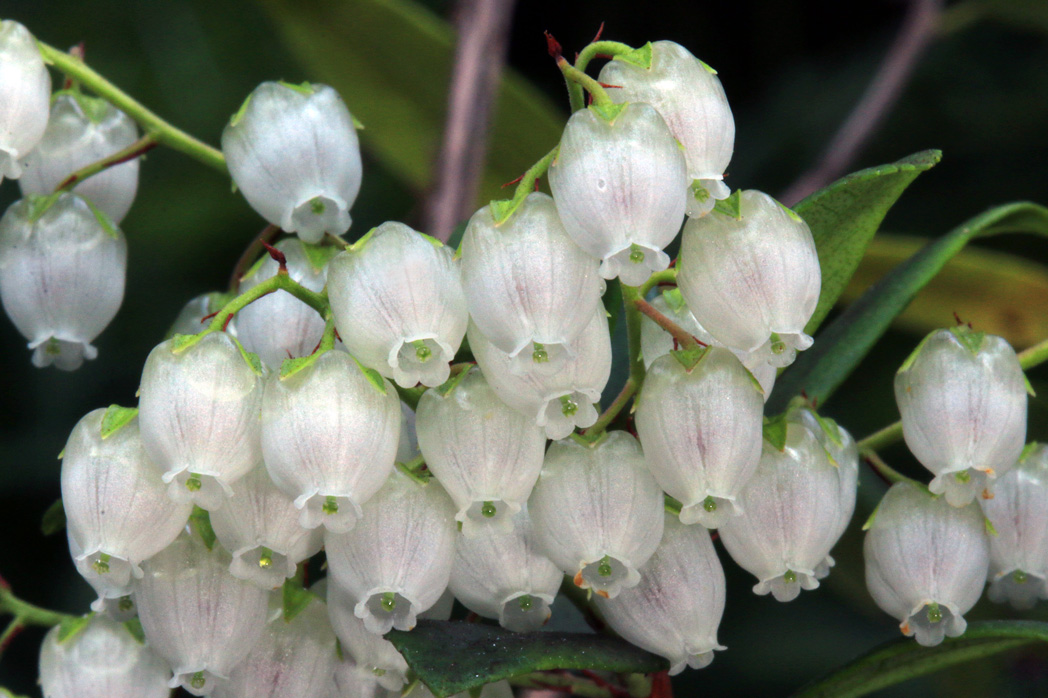Climbing fetterbush
Pictured above: Climbing fetterbush (Pieris phyllyreifolia) by Alan Cressler, courtesy of Lady Bird Johnson Wildflower Center. Click on terms for botanical definitions. View post as a PDF.
Climbing fetterbush is an evergreen vine-like shrub found in swamps, moist pinelands, upland mixed forests and sandhills in the Panhandle and several peninsular counties. It blooms fall through early spring. Its typical habit is to ascend the trunks of cypress trees by creeping under the fibrous bark, although it is not parasitic. Other host trees include pine, Atlantic white cedar, titi and cabbage palm. Climbing fetterbush is the only vine-like member of the Ericaceae family found in the United States.
Climbing fetterbush’s small flowers are white, urn- or bell-shaped and born in elongated racemes. Leaves are leathery, elliptic to ovate, and alternately arranged. Leaf margins are generally entire but may bear tiny teeth near the apices. Fruit is a small oval capsule.
Family: Ericaceae (Heath, azalea or blueberry family)
Native range: Panhandle, central peninsula to Lake County
To see where natural populations of Climbing fetterbush have been vouchered, visit florida.plantatlas.usf.edu.
Lifespan: Perennial
Hardiness: Zones 8A–9B
Soil: Moist, acidic soils
Exposure: Partial to full shade
Growth habit: 15–30’+ long
Propagation: Seed
Garden tips: Climbing fetterbush can be trained to grow along an arbor or trellis, or pruned into a shrub.
Climbing fetterbush is occasionally available from nurseries that specialize in Florida native plants. Visit www.PlantRealFlorida.org to find a nursery in your area.

